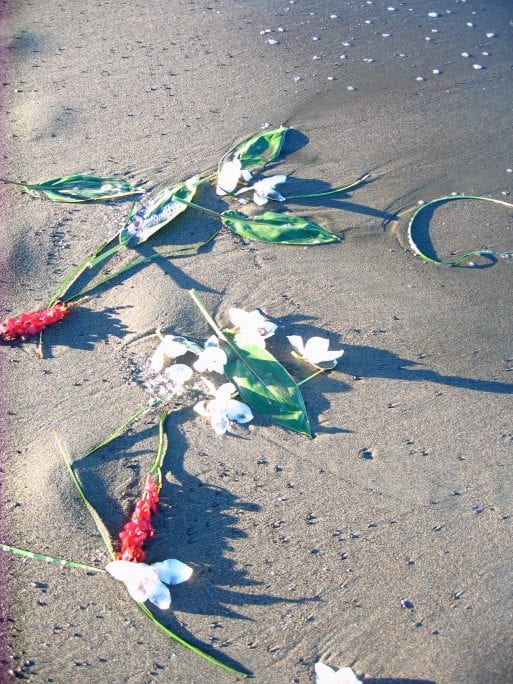
Flowers washed ashore in Boynton Beach, Florida following a cremation ash
scattering ceremony at sea
The appeal of scattering cremation ashes is immediate and visceral — it is to return to nature what nature created, “ashes to ashes, dust to dust.” A 2018 Consumer Preferences Study by the National Funeral Directors Association shows that of the growing number of Americans who would choose cremation for themselves, more than 50 percent, would prefer to have their remains scattered in a “sentimental place.”
And with 1.5 million cremations completed in 2018 in the United States alone and a projected increase to 2.8 million cremations per year by 2035 — that’s a lot of people scattering cremation ashes.
The options — both legal and illegal — are endless. Many choose to bury or scatter cremated ashes at home in the garden, or at beloved beaches, national parks, or overlooks. Others want to scatter their loved one’s ashes at their favorite stadiums, golf courses, roller coasters, or even have the ashes shot into space.
And herein lies the problem for many ash scatterers — the legality of scattering cremation ashes varies by location and venue, leaving many people unsure or uncertain about the legality of their actions.
Many states, such as Florida, Hawaii, Ohio, and Colorado, have few restrictions. Others, such as California, allow the practice but have stricter laws about where, when, and how. And still other states, such as Illinois, prohibit the practice altogether. That being said, because cremated ashes are sterile and pose no health hazard, most law enforcement will look the other way. According to Milos Djordjevic, owner of Caring Cremations in Chicago, “I let the families know that it’s kind of like jay-walking. I’ve never heard of anyone being fined or anything like that.”
Local municipalities, national parks and private venues usually have their own set of policies. The best option is to research the area you’re interested in and always ask permission. Some venues, such as Disneyland, strictly prohibit the scattering of ashes, while others have designated areas (and even offer ceremonial assistance) for the practice.
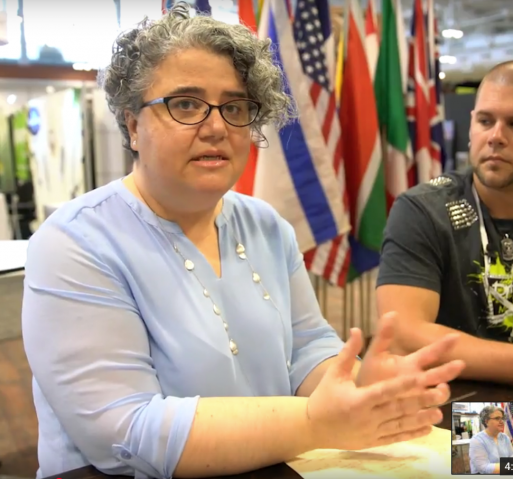
Barbara Kemmis, Executive Director of the Cremation Association of North America, is the leading authority on cremation in the United States
Credit: Connectingdirectors.com
The Role of the State and Funeral Homes
The majority of states do not require families to know what they’re going to do with cremated ashes at the time of death. According to Barbara Kemmis of the Cremation Association of North America (CANA), “It’s quite normal for there to be a window of time from when families receive their loved one’s cremated remains to when they’re actually able to figure out what’s right for them.” Most death certificates will list five broad options, such as cremation, burial, entombment, medical donation and other (which is typically selected if the body is in storage due to a crime). At the time of writing, California is the only state that asks for more information. But, if you do not know where you will be scattering (or if you do not want to say) you can simply select “Residence.”
The funeral home or crematory you use should be able to help guide you in both filling out any associated permits as well as helping you know your local rules about scattering ashes. Says Barbara Kemmis of CANA, “Most will help the family try to find a suitable place. I think they have all spoken to that universal challenge and they try to work with the family.”
Chuck Ayres of Ayres Family Cremation in Humboldt County, California, states that they work in close conjunction with the county to facilitate scattering permits for the families who use their services, which he says is typical. “Most crematories and funeral homes will do so, and some will usually have connections to a third-party service they can use to help families scatter ashes.”
Scattering Gardens, Cremation Gardens, and Scattering Forests
Sometimes a cemetery, funeral home, or church will have a scattering garden — a designated area where people can bury or scatter their loved one’s ashes.
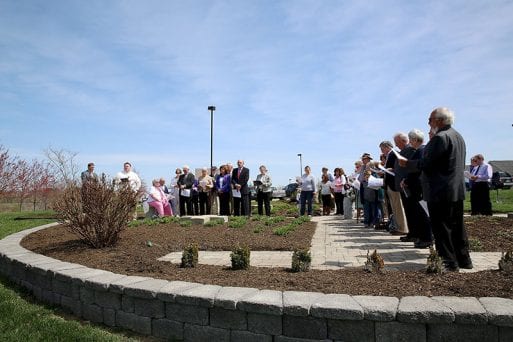
The Memorial Scatter Garden at Opequon Presbyterian Church in Virginia
Credit: opequonchurch.org
The price for using a scattering garden can range from $100 to $400 depending on the cemetery, with a memorial plaque or nameplate costing roughly the same amount. Regardless of whether a nameplate is purchased, the cemetery is required by law to keep a record of those who are buried or scattered on their grounds.
Of the record-keeping, Thomas Simpkins of the family-owned-and-operated Kauai Memorial Gardens noted that while a log is required by law, it’s also useful to have for genealogical purposes. “We get people who come in who don’t know where their family is buried and those records can help us find them.”
Scattering gardens are not to be confused with cremation gardens or urn gardens. A scattering garden is intended for the dispersal or burial of the ashes without an urn or permanent marker. A cremation garden is more like a traditional burial in that the ashes remain in the urn and the urn is usually buried.

Glass-front niches in the Ocean View Terrace Cremation Garden at Oahu’s Valley of the Temples Memorial Park
Credit: valley-of-the-temples.com
A spokesperson for Oahu’s Valley of the Temples explains, “In a cremation garden, the urn is placed in a glass-front niche, or interred in the ground with a marker. A lot of families do pre-planning and want to be close to loved ones, so they buy several plots and bury the ashes. The niches are popular because they can hold more than one urn and it can be more cost-effective.”
Natural scattering options, such as conservation scattering forests developed by Better Place Forests, are a more recent option for those who are looking to memorialize their loved one in a permanently protected forest.
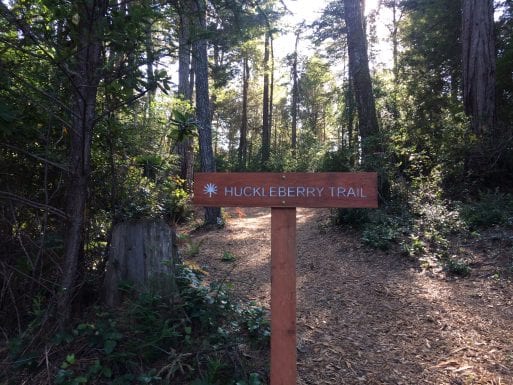
Conservation scattering forests like Better Place Forests are an innovative take on scattering gardens, allowing families to revisit the specific tree their loved one was scattered around
Try Wildcat Scattering
One practice that many people participate in is “wildcat scattering,” which is the practice of scattering a loved one’s ashes widely, in different locations and at different times. Some people ritually travel with ashes (which is legal to do) while others mail portions to friends and family in faraway locations to do their own scattering rituals (also legal).
As to getting your cremated ashes (whether human or pet) to a location where you want to scatter them, you are able to both mail them and travel with them.
If mailing, the United States Postal Service is the only carrier who will do so. They have a thorough and updated online manual that outlines their rules:
- Mail cremated remains using Priority Mail Express and Priority Mail Express International.
- The ashes must be in an inner container that is sift-proof and placed in an outer container (such as the free Priority Express Boxes).
- The outer box must be marked on all sides with Label 139 “Cremated Remains,” which is available at any Post Office location or online at USPS.com.
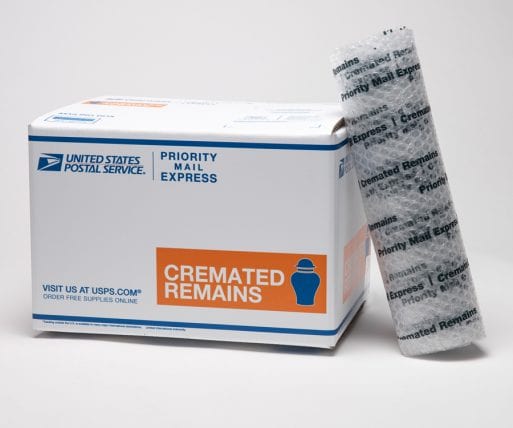
United States Postal Service Label 139 “Cremated Remains.”
Credit: Usps.com
If you want to travel with cremation ashes, most airlines will allow you to do so. However, the rules about whether or not cremation ashes are allowed in your checked baggage will vary airline by airline, so it’s important you check before you travel.
Most airlines prefer, and the Transportation Security Administration recommends that you travel with cremation ashes in your carry-on. Checked bags are subject to more rough-and-tumble movements, whereas you have more control with a carry-on.
According to the TSA website, the container that holds the ashes must be scannable (e.g. wood, plastic, or transparent glass). If the container returns an opaque image, they will not allow its passage.
Scattering Cremation Ashes on Private Land — Sports Stadiums, Golf Courses, And Other Venues
If you or your loved one is an avid sports fan or golfer, it may have crossed your mind to scatter ashes at a favorite stadium, golf course, or field. You wouldn’t be the only one. An online documentary series, “Mr. Impossible,” cites an ESPN SportsNation poll where more than 75 percent of those surveyed said they were willing to scatter cremation ashes inside a Major League Baseball stadium.
The rule of thumb when it comes to legally scattering cremation ashes on private property is to ask for permission. Very few (if any) professional-level sports stadiums allow scattering cremation ashes on their property. The same goes for theme parks (including Disneyland), most golf courses, and college stadiums as well.
But that stops hardly anyone. There are hundreds of anecdotes of people secretly (and not so secretly) scattering cremation ashes at baseball stadiums, golf courses, football fields, and other locales.
Take, for example, the 2005 incident at Lincoln Financial Field, home to the NFL’s Philadelphia Eagles. At halftime, Christopher Noteboom ran onto the field, releasing his mother’s ashes into the wind to encouraging roars of the crowd. He was immediately arrested and charged with defiant trespassing ($100 penalty and 50 hours of community service). Running onto a field is typically never tolerated, especially when large crowds and an unknown substance is involved.
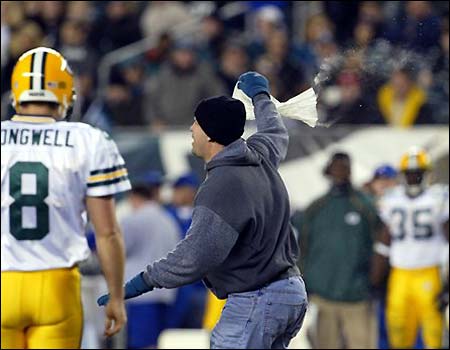
Noteboom told reporters, “I know that the last handful of ashes I had are laying on the field, and will never be taken away. She’ll always be part of Lincoln Financial Field and of the Eagles.”
Credit: partamian.net
Another story of cremation ashes causing a public health safety scare happened in 2016. The Metropolitan Opera in New York shut down during the middle of one performance and canceled another when an “unknown substance,” was found in the orchestra pit. Turns out, an audience member had come to the performance of “William Tell” specifically to pour out the cremated ashes of his former mentor.
the view at 4:07pm with the security looking into the pit pic.twitter.com/HVhNUyBcbI
— Sasha (@sasherka) October 29, 2016
But there is another reason to ask for permission that many people don’t consider. It ensures the ashes of your loved one end up in the desired location.
Says Barbara Kemmis of Cremation Association of North America, “It’s one thing when someone says, ‘I want Disneyland or insert-favorite-sport-stadium to be my final resting place but practically speaking, human ashes are human ashes. There are bone fragments — they don’t just melt into the ground. So when it comes time for a family to scatter ashes in a location like that, the reality is much more difficult. Are people going to get in trouble? No, most likely they won’t. But will those ashes end up in the garbage? Most likely, yes.”
Someone just had to spread Grandpa’s ashes on #18 green. We just back pack blew him into a bunker. #dustinthewind pic.twitter.com/4fwjcSYdQT
— Jeff Corcoran (@ohccturf1) July 8, 2015
A 2015 tweet from Jeff Corcoran, Superintendent of Oak Hill Country Club, demonstrates their policy regarding found cremation ashes.
Many stadiums and golf-courses have no official disposal policy regarding found cremation ashes, and as stated by Barbara above, the likelihood that they end up in the garbage is high. General Manager of the Los Angeles Memorial Coliseum, Joseph Furin stated that if they did find any cremation ashes left behind, they, too, would most likely throw them away. And it doesn’t seem a popular practice for USC fans, anyhow. According to Furin, they have never found “illicit” ash piles, and the last request to do so was more than two years ago.
The only options for private venues aren’t just “no,” or “no, wink wink” — some sporting stadiums like NASCAR’s Bristol Motor Speedway in Tennessee allow scattering of ashes within certain restrictions. Many venue owners and managers see it as a way to both limit unexpected scatterings (that can cause damage to the stadium grass) while also nurturing lasting connections between the family and venue or franchise. In the United Kingdom, some football clubs have begun offering a “Garden of Remembrance” to help handle the sheer volume of requests they receive.
Scattering Cremation Ashes in National and State Parks
National and State Parks are gorgeous natural environments and special places to many people, making them popular locales for scattering ashes.
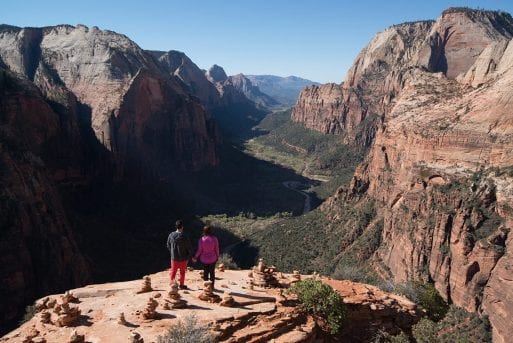
Angel’s Landing at Zion National Park is one of many locations that allow the scattering of cremation ashes with a permit
Credit: zionnationalpark.com
Many parks do allow the scattering of cremation ashes with a special use permit (costs range from $25 to $85, not including park entrance fees). Additional fees may be incurred should you choose to host a larger memorial service onsite. No monuments are allowed, and most require permit applications to be submitted a minimum of 3 weeks in advance.
The requirements for a permit will vary from park to park, but you can generally expect to need a copy of the Certificate of Cremated Human Remains to accompany your application. There will also be strict rules about where you can and cannot legally scatter cremation ashes, with places near roads, campsites, developed areas, and bodies of water prohibited. Some parks restrict the scattering to a specific area, such as the Watchman Trail and Angel’s Landing at Zion National Park or Piracy Point at Bryce Canyon.
According to Matthew Khalar, Park Ranger for California’s Big Sur State Park, the restrictions are because “human remains have the potential to cause real and lasting damage to sensitive areas. There is a good chance that the desired area may be an archaeological site or near an environmentally sensitive area.” Khalar went onto say that the park’s personnel would typically work with the person making the request to find a suitable location.
While there is no comprehensive list of which parks do or do not allow scattering of ashes, it is fairly easy to find out. Many parks let you know on their individual parks.gov and nps.gov websites. Many include clear directions with contact numbers for the park Superintendent and an option to download Special Use Permits. The Grand Canyon, Mount Rainier National Park, Yosemite National Park, and National Park Hawai’i are some of the more well-known parks that offer this.
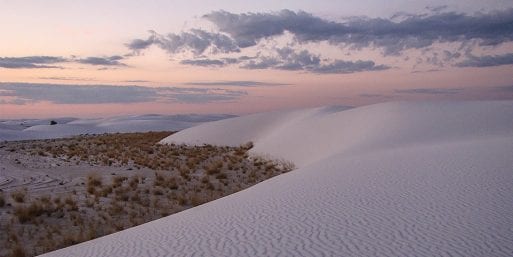
White Sands in New Mexico is another National Park where the scattering of ashes is allowed with a permit
Credit: nps.gov
Scattering cremated ashes without a permit in an undesignated area is considered littering, which can incur a variable fine. “Depending on the nature of the exact violation [and] location in relation to sensitive areas,” says Khalar, “the fines can potentially run into the thousands of dollars.”
Whether or not you incur a fine or are simply escorted away depends on where you are, who finds you, and how strict they are at enforcing the rules.
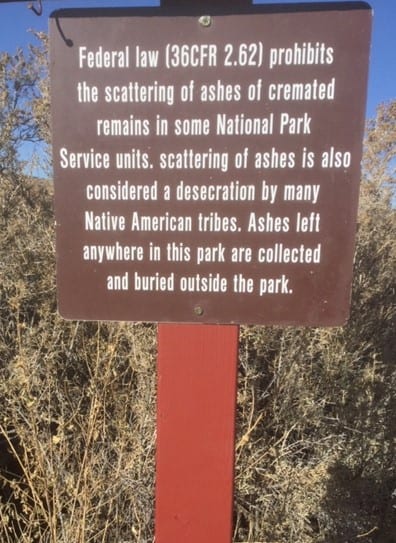
Sign at Aztec Ruins National Monument.
Image credit: Kathleen Snow, National Park Volunteer
It is important to note that National Parks and Monuments whose primary purpose to preserve American Indian sites and cultural heritages — such as Chaco Canyon, Aztec Ruins, Four Corners, and Mesa Verde in the Southwest United States — prohibit the scattering of cremation ashes completely (Federal Law 36 CFR 2.62 – Memorialization).
This is because descendants of the earlier inhabitants still use these locations and maintain their traditions and ceremonies. Scattering cremation ashes is in direct conflict with their practices and is considered a desecration. Not only that, many of these places are archaeological sites, and the addition of cremated ashes can disturb the archaeological record.
According to a Nathan Hatfield of the Aztec Ruins National Monument, the fine for scattering ashes at the Monument is $180 and any cremation ashes found on the premises are removed and taken to a funeral home for disposal.
Scattering Cremation Ashes At Sea
Scattering cremation ashes into a body of water (sometimes referred to as a water or sea burial), is growing in popularity, and there are a number of big and small ways to do so. Whether you opt to quietly scatter ashes in a waterway near your home or pour them out in the middle of the ocean during a big ceremony aboard a Carnival Cruise ship, there are a couple of things to keep in mind.
When scattering cremation ashes in the ocean, the Environmental Protection Agency requirements dictate they should be scattered at least three nautical miles from land. However, EPA rules can be superseded by local or state law, and they often are.
For example, in Hawaii, no permit or documentation is needed to scatter cremation ashes at sea. And the state of California allows people to scatter cremation ashes just five hundred yards from shore.
For inland water burial, it’s best to contact the local or state agency that manages the waterway to find out their requirements and if you need a permit. Most local authorities will turn a blind eye to people scattering cremation ashes without a permit, as they tend to be more focused on bigger polluters. That being said, whatever body of water you choose, be sure to either scatter or pour the ashes directly into the water (using your hands or a scattering urn) or use a biodegradable container.
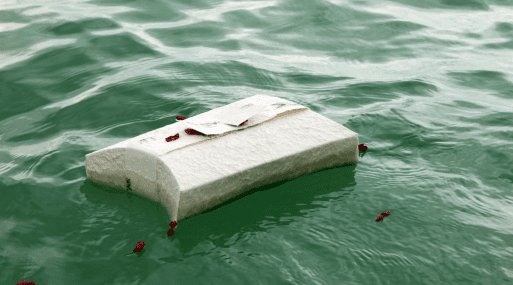
Mulberry bark is a popular material for water burial containers due to its versatility, ability to be harvested without damaging the tree, and affordability
Credit: passagesinternational.com
Says Barbara Kemmis from CANA, “It’s kind of shocking how many calls we get from reporters and law enforcement who have found a plastic or bronze urn that washes up on the beach, and they want to return it to the family. I think a lot of families want to fulfill their loved one’s wishes to be scattered at sea, but they don’t want to open it up and touch the actual remains so they just throw it overboard, thinking it will sink. If you want to be scattered at sea — actually have your ashes scattered at sea, not your urn.”
Using a Biodegradable Urn
A biodegradable urn, or water urn, is made from non-toxic materials such as mulberry bark, natural clay, Himalayan sea salt, crushed quartz, and others. Inside, is usually a non-toxic bag that contains the ashes. The urn is designed to float for several minutes, then slowly sink into the water. Then, over the course of several hours or days, the ashes will be released into the water as the urn breaks down completely.
If you choose to pour or scatter ashes directly into the water, you do not need a biodegradable container. You can use your hands, a traditional urn, or use “scattering urns” which include a specific open and close mechanism designed to give you more control over the process.

Cremation ashes can be scattered into the water along with flower petals, plants, and other materials as long as they’re 100 percent biodegradable
One fantastic idea for scattering ashes at sea is called ringing. Ringing is the practice of people forming a circle, or ring, around a central object (in this example, the scattering of the ashes), whether on land or in water. The ashes can be poured out in the middle of the ring, or each person can have their own that they release. You can see ringing in action in the video below, taken during an ocean funeral in Hawaii.
Aerial Scatterings With Balloons, Airplanes, and Spacecrafts
The Federal Aviation Administration doesn’t prohibit a pilot from scattering cremation ashes from an airplane, as long as there’s no hazard to people or property (as stated by Federal Aviation Regulation 91.15). Nonetheless, you’ll have to check your local laws as some states prohibit scattering ashes over developed areas or bodies of water.
A number of commercial companies provide aerial scattering services over a variety of locations, and the cost depends largely on the location and level of involvement. Usually, they offer a range of pricing and packages, starting with a basic package (around $250) where the pilot will scatter cremation ashes on their schedule. “Witnessed” ariel scattering is another option, in which the pilot flies over a spot where the family can observe the scattering from the ground. Others, still, offer “private, on-flight” scatterings where family members themselves can release the cremation ashes from the plane.
If you want the ashes scattered over water from a plane, the EPA and Clean Water Act guidelines outlined above apply, unless overridden by state law. For scattering cremation ashes over National Parks, Bureau of Land Management Land, or Conservancies you’re required to get permission from the controlling authority. Most companies that offer aerial scattering services, such as “A Journey with Wings,” will obtain all required permits as well as file all the necessary paperwork.
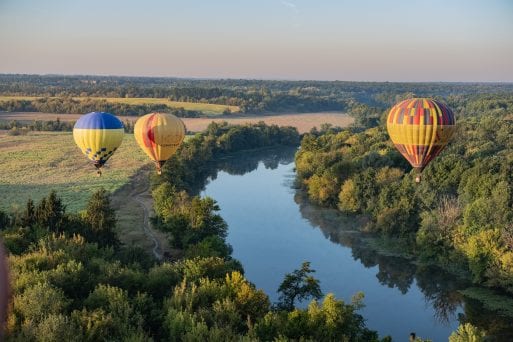
The same rules for scattering cremation ashes from a plane apply to any airborne vehicle including hot air balloons, drones, and hang gliders
Like many plane rental enterprises, some hot air balloon companies have begun offering special cremation scattering packages — you can either scatter the ashes yourselves or send them to the company to do it for you.
Scattering Cremation Ashes in Outer Space
The future is now, and believe it or not, you can have a portion of your (or your loved ones’) cremated remains memorialized in space, known as a space burial.
Thomas Civeit, Founder and CEO of Elysium Space, explains how their company does their Shooting Star Memorial (see our complete 2015 interview here), “We send a special kit to the family. It contains a metal cube, about the size [of] a single dice. The family member places that amount of ashes in the cube and sends it back to us in the kit. The cube is placed in a tray along with all the others we receive.”

“[Space burial] is a mesmerizing moment and an exceptional way to memorialize someone — literally dust to dust.” Thomas Civeit
Celestis Memorial Spaceflights is another company that provides space memorials. They offer several different services from an orbit around the earth (starting at $4,995) or sent to the moon or to deep space (starting at $12,500).
Eternal Ascent Society provides a more hands-on “space” burial at 30,000 feet. A large biodegradable balloon is filled with cremation ashes and helium and then released into the air. Once the balloon hits the thin, freezing air of the upper troposphere, it will burst, scattering the ashes.
Things to Keep in Mind
Whether you choose to scatter ashes without permission or do so legally, here are some general tips to keep in mind:
Be discreet and respectful of others — not everyone feels comfortable about human cremated remains. If you’re scattering cremation ashes in a location where other people are around, be mindful. Choose a time when it’s less busy and find some distance from crowds if possible. Keep in mind that found piles of ashes can be mistaken for unknown volatile substances and treated as such.
Be aware of environmental impacts — Cremated ashes contain a high concentration of calcium and calcium phosphate; thus, they’re highly acidic. Pouring ashes on plant life can burn and kill them, creating dead zones for several years.
Consider the future — Do you want a specific place you and future generations can return to? If so, then perhaps consider a scattering garden, a place with a record or plaque, or at the very least, a location that will remain accessible. Stadiums and other venues aren’t always permanent. Roberta DeMartini ended up scattering her sister’s and her mother’s ashes on a hillside near the entrance of some headlands in the Bay Area. “Now there’s a fence around, so that people don’t walk on the hillside anymore. I haven’t gone across the barrier and walked up there in a while, but the last time I did, there were still pieces of their bones down there. It was really amazing being able to sit there and touch them and talk to them. It was very healing for me. It’s nice to know that they’re there. We also have them registered on findagrave.com [a website] that will help others find where they are.”
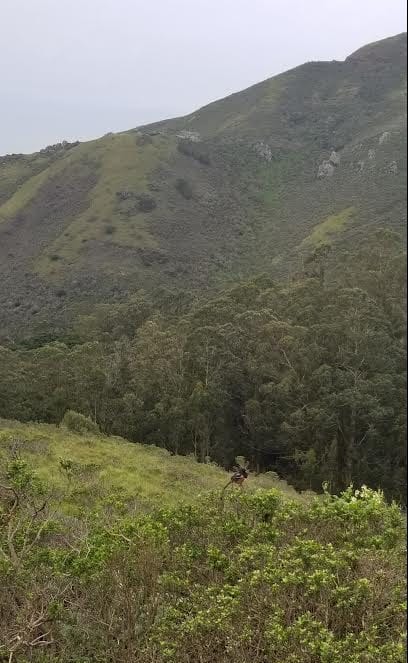
The beautiful hillside where Roberta DeMartini scattered the
cremation ashes of both her sister and mother
If you’re are left with the decision of where to scatter your loved one’s ashes, the most important thing is to ask yourself what you want the experience to be and what is meaningful to you. If you prefer to keep it simple, consider scattering or burying the ashes at home or ask the crematory what they recommend. If you want to share the experience with others, consider mailing portions of the ashes to others. If you want a continual ritual, opt for wildcat scattering and travel with portions of ashes to release in memorable locations.
If the idea of dealing with details and permits or handling cremation ashes doesn’t appeal to you, then perhaps look to a cremation scattering company for help. In recent years, a number of companies have arisen to help families legally scatter ashes by getting appropriate permissions and permits, such as the International Scattering Society in Montana and Afterlife Adventures in Texas.
And if you’re planning for yourself for the future — consider what is meaningful to you and also what is achievable for those tasked with the mission. And unless your loved ones appreciate a sense of adventure (and as we’ve seen, many do!), you may have to reconcile there’s no legal way to fulfill your desire.
However, as we’ve also seen, there are a number of memorable, unique, and personal options for those who want to legally scatter cremation ashes. All you need to do is choose.

 Everything You Need to Know About Legally Scattering Cremation Ashes in the United States
Everything You Need to Know About Legally Scattering Cremation Ashes in the United States


 “Help Me, Helen”
“Help Me, Helen”

 “As Tears Go By” by Marianne Faithfull
“As Tears Go By” by Marianne Faithfull














